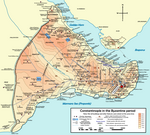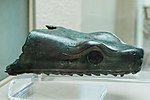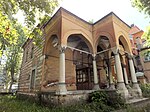The Turkish and Islamic Arts Museum (Turkish: Türk ve İslam Eserleri Müzesi) is a museum located in Sultanahmet Square in Fatih district of Istanbul, Turkey. Constructed in 1524, the building was formerly the palace of Pargalı Ibrahim Pasha, who was the second grand vizier to Suleiman the Magnificent, and was once thought to have been the husband of the Sultan's sister, Hatice Sultan.
The collection includes notable examples of Islamic calligraphy, tiles, and rugs as well as ethnographic displays on various cultures in Turkey, particularly nomad groups. These displays recreate rooms or dwellings from different time periods and regions.
The space utilized for the museum was once a ceremony hall for the original Palace. Many of the sections of the museum contain notable influences from the palaces well kept setting, making it an impressive art sanctuary dedicated to displaying the culture of Islamic art from various periods. The museum houses over 40,000 works of art that range from carpet art, wooden works, and stone art collections. The museum is one of the largest museums in Turkey. The Turkish and Islamic Arts Museum is culturally rich in various areas, including its location, as it sits across from the famous Blue Mosque in Istanbul. The Turkish and Islamic Arts Museum is well respected for its cultivation of art, culture, and history. Over the many years of its existence, the museum has received acknowledgement for being Islamic art hub that narrates the relationship between art history and material culture. The museum was the first to bring together all Islamic arts of Turkey. The museum notably creates and participates in temporary national and international exhibitions since its establishment. In 1984 the museum was awarded Special Jury Award of Museum of the Year Competition of the European Council and a prize given by European Council - Unesco for its studies for making the children love the culture inheritance.








